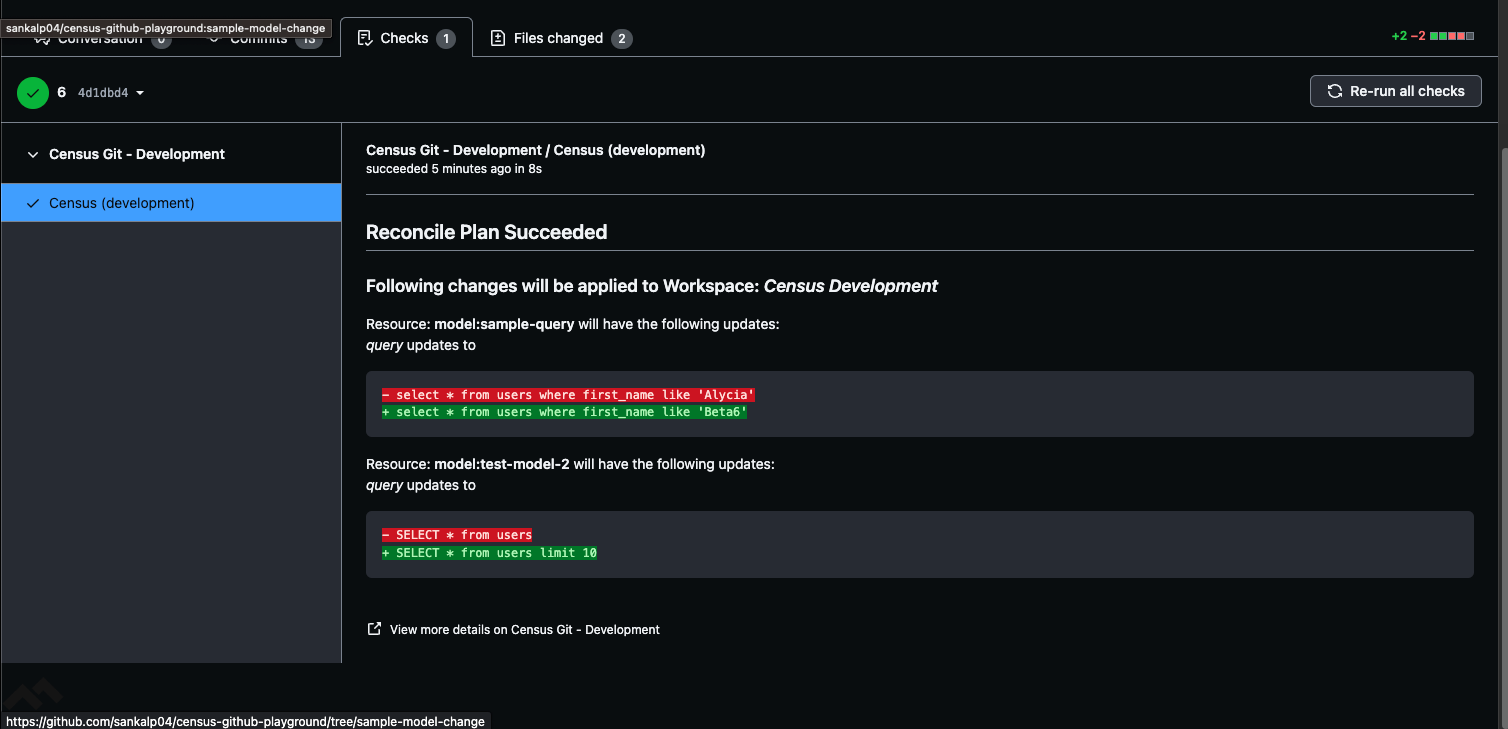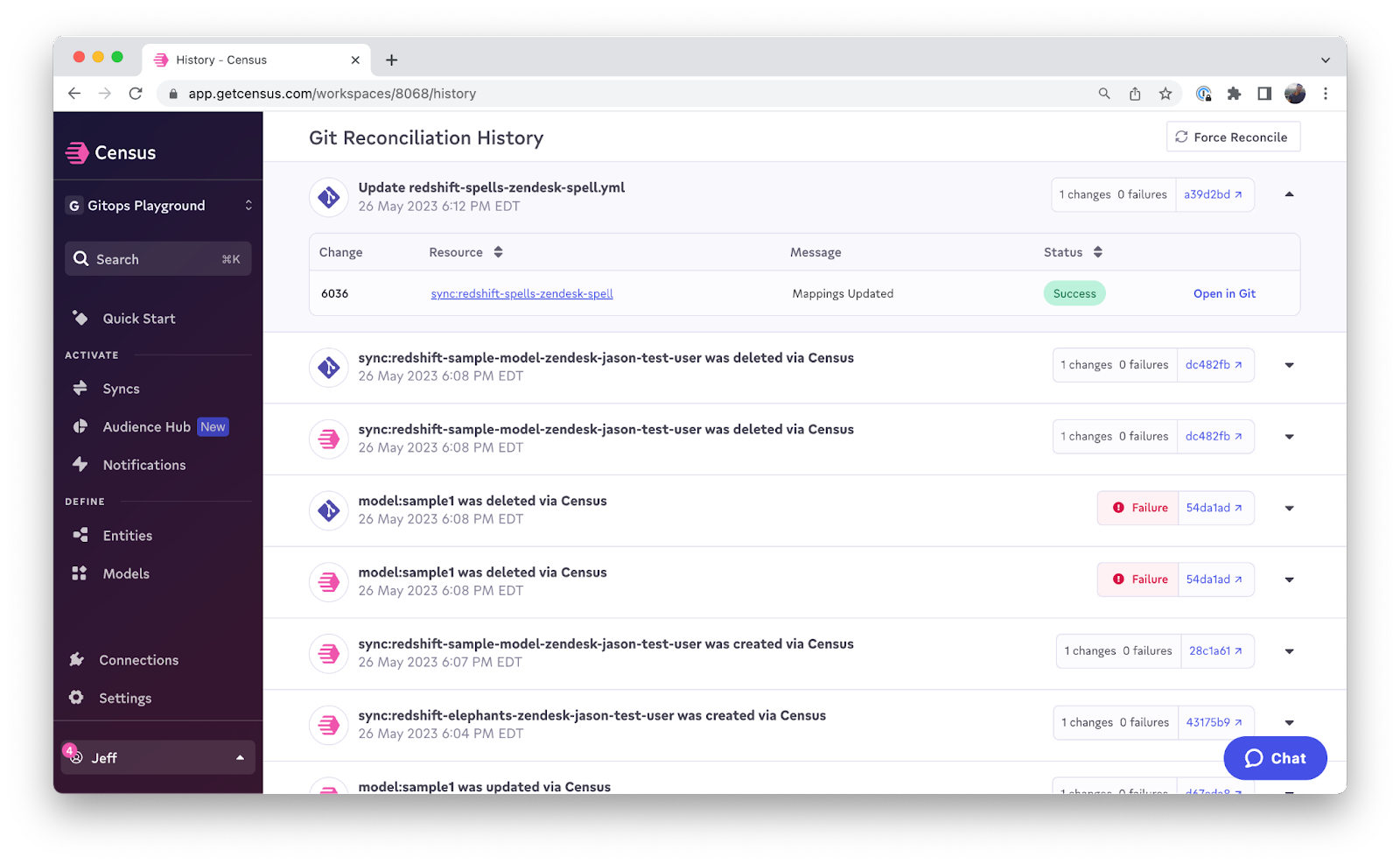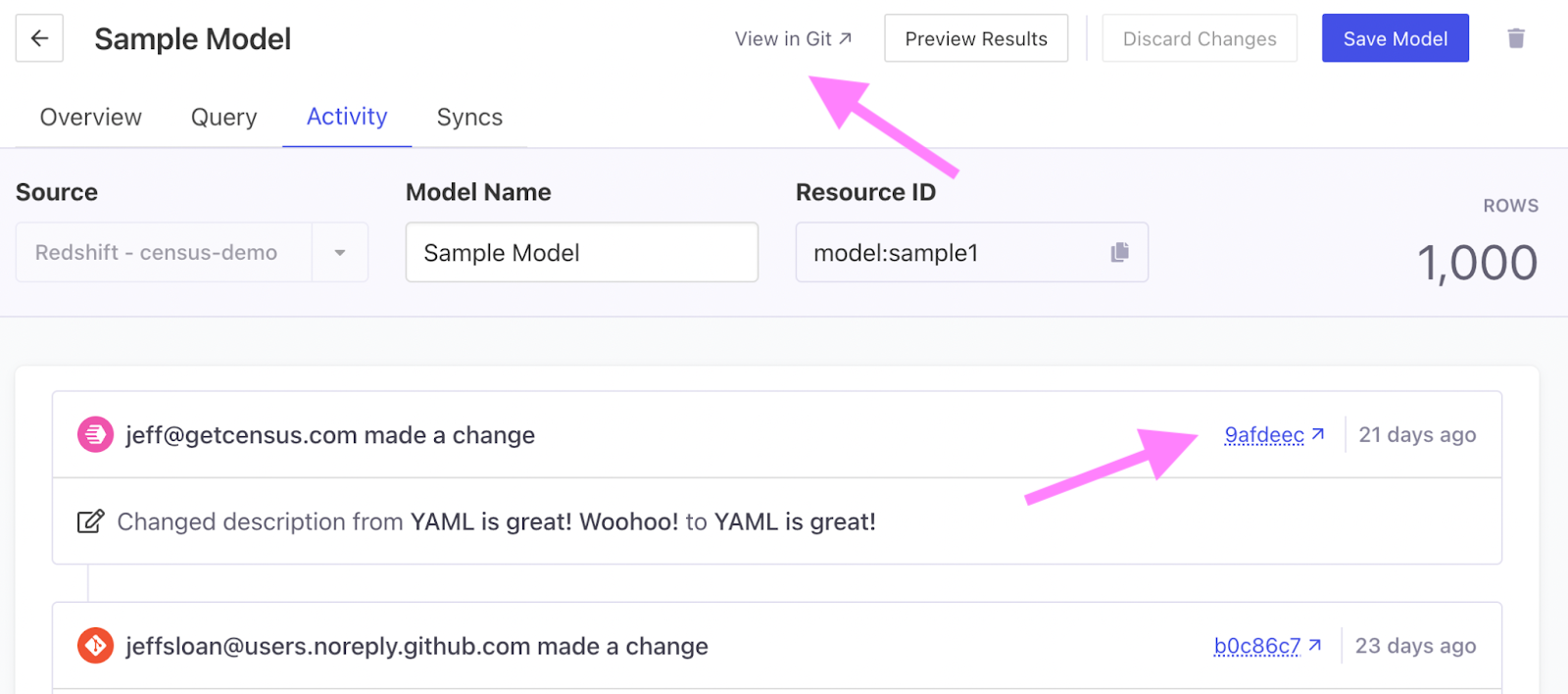At Census, our core belief is that your data activation workflows deserve the same care and attention as production-grade software. Existing data integration platforms like CDPs sacrifice governance and observability for user friendliness. We don’t think this tradeoff should exist.
Modern data teams already have solutions for quality. We leverage tools like configuration as code and Git to build and manage data pipelines at scale.
That’s why we’re excited to announce Census’s Git integration, called GitLink. By syncing configuration bi-directionally between your Census workspace and Git repository, GitLink makes your data activation workflows completely manageable in code.
Census, with the launch of GitLink, does for data activation what dbt does for analytics engineering. GitLink brings software development best practices to your Reverse ETL pipelines, enabling version control, testing, and peer review.
GitLink Features
GitLink enables:
- Data activation as code. Create, edit, and review your Census SQL Models and Syncs directly in simple, well-defined YAML files.
- Bi-directional syncs. Use the Census UI for quick edits, or push changes to Census as easily as a Git commit from your terminal. Use the right tool for the job, and never step foot in the Census UI if you don’t need to.
- Version control and seamless rollbacks. All changes in the UI are committed to your Git repository, and linked to the Census user who made them. View all changes to your Census configuration, and roll back any mistaken changes with the power of Git.
- Automated integration testing. Census will run continuous integration (CI) checks on any pull requests in your Git repository, and let you know what changes will occur in Census, or if any changes are invalid.
- Governance for every use case. Enable any approval flow your team needs. We give you the option to fully govern any Census workspace in Git with view-only access controls + GitLink. Alternatively, if you allow self-service in the Census UI, GitLink will maintain a running list of any data dependencies created by your teammates.
In short, GitLink brings software engineering best practices of version control, peer review, and testing to all your marketing and business operations.
Here it is in action:
Census bridges the gap between data and marketing
GitLink is a huge leap forward for data and marketing team collaboration. Census gives you the best of both worlds:
- Marketers thrive in a self-service Audience Hub that enables no-code audience targeting in 200+ marketing and business tools.
- Developers and data teams who live and breathe in code can manage data activation pipelines alongside their data engineering workflows.
Don't sacrifice the governance, security, and quality control that code gives you. Instead, you can manage your operations in code or no-code, keeping both worlds in sync.
How it works
When using GitLink, you (or your teammates) can make changes in code with ease, or continue to make changes effortlessly in the Census UI.
After you make changes via Git or the CLI, GitLink deploys your changes by taking advantage of separate planning and execution steps under-the-hood (analogous to Terraform’s plan and apply commands). This separation means that Census can easily run a CI pipeline on your behalf when you create a pull request, telling you:
- Exactly which resources will be created, updated or deleted
- How the resources will be changed
- Specific errors in your YAML that will prevent the changes from being deployed

After a commit is made in your Git repository, GitLink will automatically run both plan and apply steps in your Census workspace on your behalf. During this process, it applies the exact changes you’ve made, and creates a detailed audit log in the case of any errors. We store all of these logs in a Git Reconciliation History view for data teams and Census administrators.

Observability is a first-class concept with GitLink enabled. View the YAML for every Census resource, and easily audit changes in both Git and the resource’s Activity tab.

Get started today
GitLink closes the gap between your data activation workflows and the rest of your data operations in code. Use GitLink to manage critical changes and track the history of your Reverse ETL pipelines.
To get started, navigate to Settings > Integrations, and click “Setup” for Git Repository Tracking. Visit our docs for more information.
Traditional activation tools aren't built for data teams. Census is.
Traditional marketing and audience management tools are nightmares for troubleshooting, collaboration, and governance. At best, they obscure the flow of data behind simple UIs. At worst, they hide identity resolution and other business logic in a black-box you can’t debug or improve.
By combining the benefits of code and no-code approaches, Census bridges the gap between self-service and governance, enabling collaboration between marketers and data teams. The most effective organizations leverage a Composable Customer Data Platform on the data warehouse to drive marketing personalization, automation, and targeting – which is even easier with Census GitLink.
Chat with our team to learn more, or start a free trial of Census today.

















